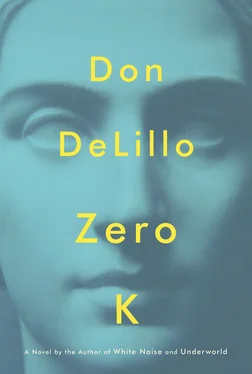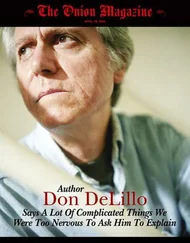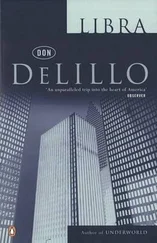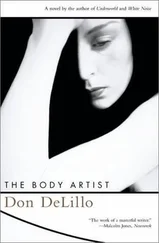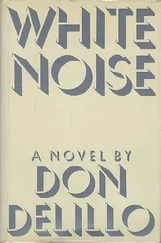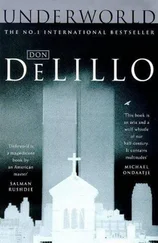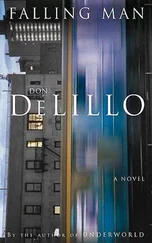I followed him down several steps into the array of carrels and saw that they held patients rather than students, people seated or strapped upright, others lying face up and utterly still, eyes opened, eyes closed, and empty carrels as well, a fair number. This was the Monk’s workplace, the hospice, and I went where he went, along a network of aisles, with carrels on either side. I could make out the texture of the nearest wall, coarse-grained, in neutral colors, bands of black and gray swabbed on, intermixed, and the scant lighting and low ceiling and huddled men and women, the general dimensions of the area, and I could not find a category, something Stenmarklike to attach to the setting.
I looked at the patients in their chairs or beds, which were neither chairs nor beds. They were a kind of padded stool or soft bench and it wasn’t easy to tell which individuals were asleep, which were tranquilized, which under the influence of anesthesia at one or another level. At times, here and there, an individual looked completely and full-bloodedly aware.
The Monk stopped at the end of the aisle we were in and turned toward me just as I turned the other way to check on the presence of our escort, who was not there.
“We’re waiting,” he said.
“Yes, I understand.”
What did I understand? That I was feeling hemmed in, close to being trapped, and I asked the Monk about his prevailing frame of mind, the disposition he experienced when he was here.
“I don’t have a disposition.”
I asked him about the stalls, the carrels.
“I call them cribs.”
I asked him what we were waiting for.
“Here they come,” he said.
There were five individuals in dark smocks, two with shaved heads, moving along the aisles in our general direction. They were attendants or orderlies or paramedics or escorts. They stopped at a nearby carrel, two of them checking devices on the headboard, one of them speaking to the patient. Three of the individuals then led the departure, single-file, and the two bald orderlies pushed the wheeled carrel along behind them. I thought of the other patients and tried to imagine the tense anticipation they felt, their turns coming, as they watched this odd troop proceed along the aisle and into shadow.
When I turned toward the Monk he was already engaged with the person in a nearby carrel. It was a woman, seated, and he spoke to her quietly in what I took to be a rambling sort of Anglo-Russian, leaning close, his hands folded over hers. The words were an effort for him to summon but the woman’s head bobbed in response and I knew it was time for me to leave the man to his task.
The Monk in his old rutted cloak, his scapular.
I wandered for a while, expecting to be stopped. I thought I might talk to someone among the bodies-in-waiting. No sign of attendants giving massages or monitoring heart rates and no sound of therapeutic music. I began to think I’d blundered my way into a half-empty warehouse of bodies, barely an eye blinking or a finger twitching.
I realized I was shivering. It was only a slight tremble but it made me look around and then up and down, dumbly, seeing the same neutral tones in all directions, states of gray, modest and somber, in-between, the ceiling lower here, the lighting dimmer, and maybe it was a bomb shelter that the Stenmarks had in mind.
I walked along the aisles glancing at the few patients in this sector. I thought the word itself was all wrong. But what were they if they weren’t patients? Then I thought of the words that Ross had used in his description of the prevailing tone here. Reverence and awe . Is this what I was seeing? I saw eyes, hands, hair, skin tone, facial configuration. Races and nations. And not patients but subjects, submissive and unstirring. I stood before a sedated woman wearing eye shadow. I did not see peace, comfort and dignity, only a person under the authority of others.
I stopped alongside a robust man seated in his carrel. He wore a knit shirt and resembled a fellow on a golf course plunked down in his cart. I stood in front of him and asked how he was feeling.
He said, “Who are you?”
I told him I was a visitor eager to be educated. I said he looked pretty healthy. I said I was curious about the time he’d spent here and how much longer it would be before he was taken wherever they would take him.
He said, “Who are you?”
I said, “Don’t you feel the chill, the damp air, the tight space?”
He said, “I’m looking right through you.”
Then I saw the boy. I knew at once that it was the same kid I’d seen in a motorized wheelchair in one of the hallways, accompanied by two hollow-bodied escorts. Here, he was seated in a carrel, shiny and very still, positioned almost sculpturelike, contrapposto, head and shoulders twisted one way, hips and legs the other.
I didn’t know what to say. I said my name. I spoke to him softly, careful not to crowd him. I asked him how old he was and where he was from.
Head turned left, eyes swiveling up and to the right, where I was standing. He seemed to be thinking his way into my presence here, possibly even remembering our momentary encounter. Then he began to speak, or to produce what sounded like random noise, a series of indistinct sounds that were not mumbled or stuttered but only, somehow, broken. He was expressing his thoughts but I wasn’t able to detect a trace of any known language, or a nuance of meaning, and he showed no awareness that he could not be understood.
He was motionless except for his mouth and eyes and I moved to a point where he did not have to stretch his range of vision. I did not speak again but only stood and listened. And I did not try to guess his country of origin, or who had brought him here, or when he would be taken to the chamber.
The only thing I did was take his hand and wonder how much time remained to him. In his physical impairment, the nonalignment of upper and lower body, in this awful twistedness I found myself thinking of the new technologies that would one day be applied to his body and brain, allowing him to return to the world as a runner, a jumper, a public speaker.
How could I fail to consider the idea, even in my deep skepticism?
I don’t know how long I remained. When he stopped speaking, abruptly, and dropped into immediate sleep, I lifted my hand from his and went looking for the Monk.
I made my way through the sector and was relieved to see the Monk standing and gesturing above someone’s carrel and it occurred to me that I might give him a name, as I’d done with the speakers in the stone room. But a name, in his case a fictitious birth name, would be dead weight. He was the Monk and he was addressing the subjects, one by one, in their carrels, their cribs.
I thought of the boy. I realized it was the boy that I should have named. It would not have helped me interpret his speech, the sounds that bounced out of him, but I would have perceived something as I listened, a fragment of identity, a tiny shaping element to ease the questions that whirled about him.
I stood near the Monk and tried to listen to what he said to those he approached. At one point, in Spanish, he told an elderly woman that she was blessed to be lying here, in peace, and to be thinking about her mother, who had been spread-bodied, in pain, to give birth to her. I was able to understand this but not everything he said to everyone until he told a middle-aged man, in English, that the place where he would reside, in a preserved state, was very deep in the earth — deeper still than this cloistered hall. Possibly even safe from world’s end. The Monk spoke enthusiastically about world’s end.
The Monk in his sweatshirt hood, his cowl.
We walked together toward the passageway where we’d entered and I asked him several questions about the procedures here.
Читать дальше
